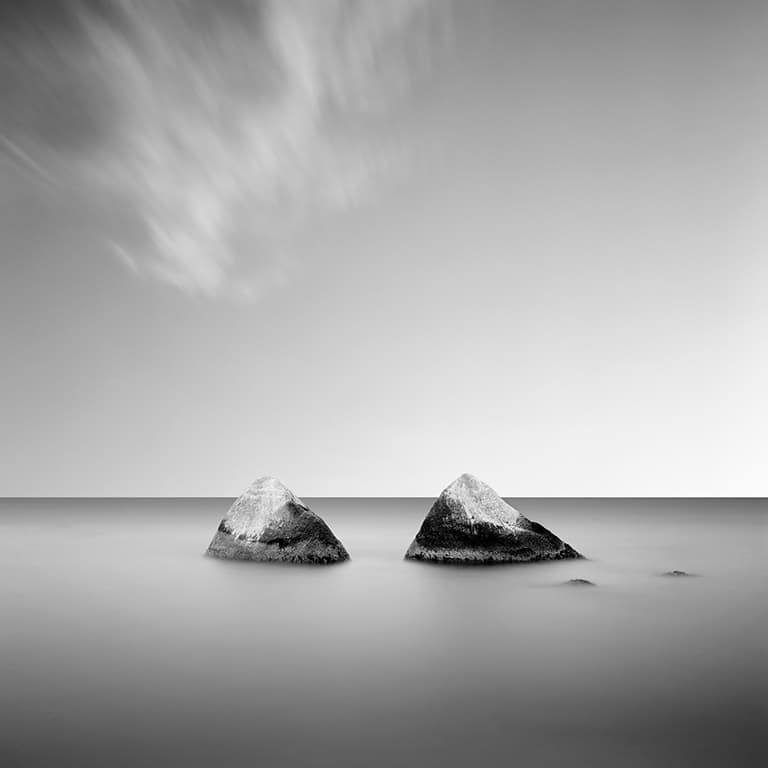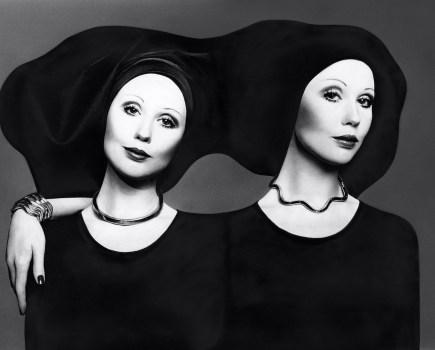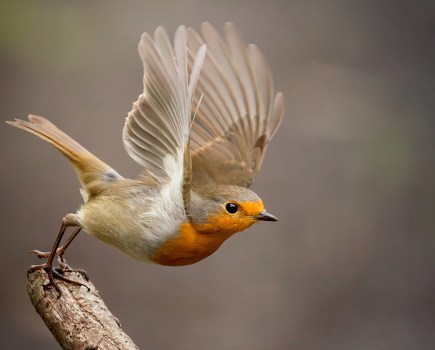Long exposures can help encode the elements of time and emotion into a photo, as large-format film photographer David Fokos explains to Damien Demolder
‘Emotions are based in time,’ American photographer David Fokos says, ‘and for me to get emotions across in my pictures I need to somehow include the element of time. My pictures are all about emotions – I’m not trying to show people what a place looks like, but what it feels like to be there.’
We feel different about a place after a good long stare instead of a passing glance, and it is this sense of how it feels to look for a long time that David Fokos aims to capture in his images. He refers to it as ‘encoding time’ into his pictures.
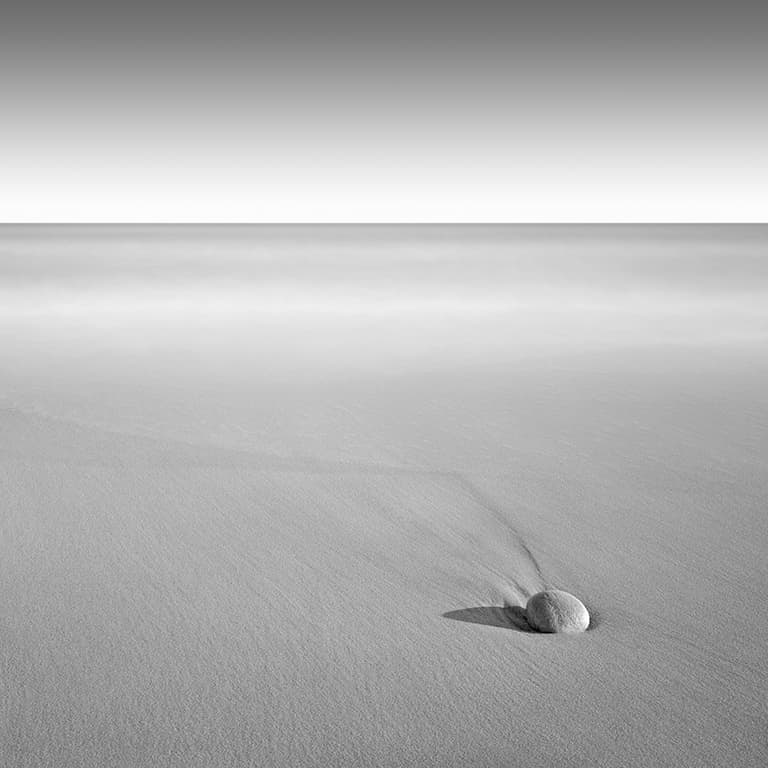
Beach Comet
A new world revealed
‘Our bodies perceive the world on many different time scales, light is received immediately, but sound takes longer, our skin responding to the sun takes even longer,’ he explains.
‘If you take a snapshot of a wave hitting a rock and capture that claw of water and droplets suspended in the air, it doesn’t make me feel calm. That doesn’t represent my experience. I respond to places over a longer period of time. I respond to the constancy of the ocean, the horizon line, the rhythmic lapping of the waves at the shore.
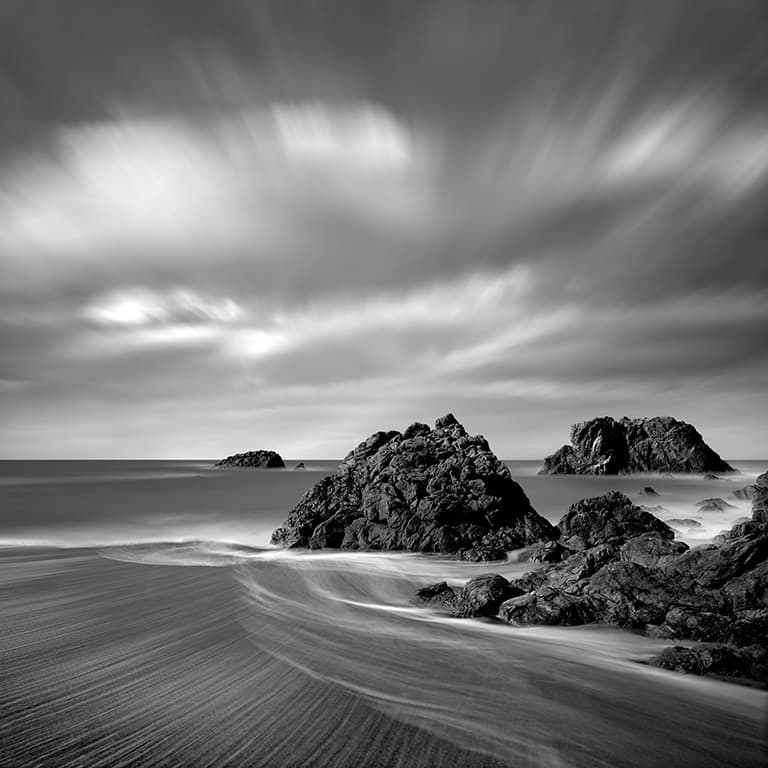
Sonoma Coast IV
This experience over time is what calms me, not that instantaneous snapshot. Snapshots are made at 1/60sec. That shutter speed was an engineering decision made by some camera people at some point in camera history. It’s become a standard because they figured people were holding cameras in their hands and taking pictures of other people.
They didn’t want blurry pictures, so that’s what the shutter speed needed to be. There was nothing in that decision that considered whether this is how we experience the world.’
David strongly believes that the camera can be used as a scientific tool to visually experience this hidden world. ‘All the time the shutter is open the camera is receiving data, so it’s not like I’m making it up – it’s not like I’m a painter and this is my interpretation. It’s actual data that’s received from the physical world.
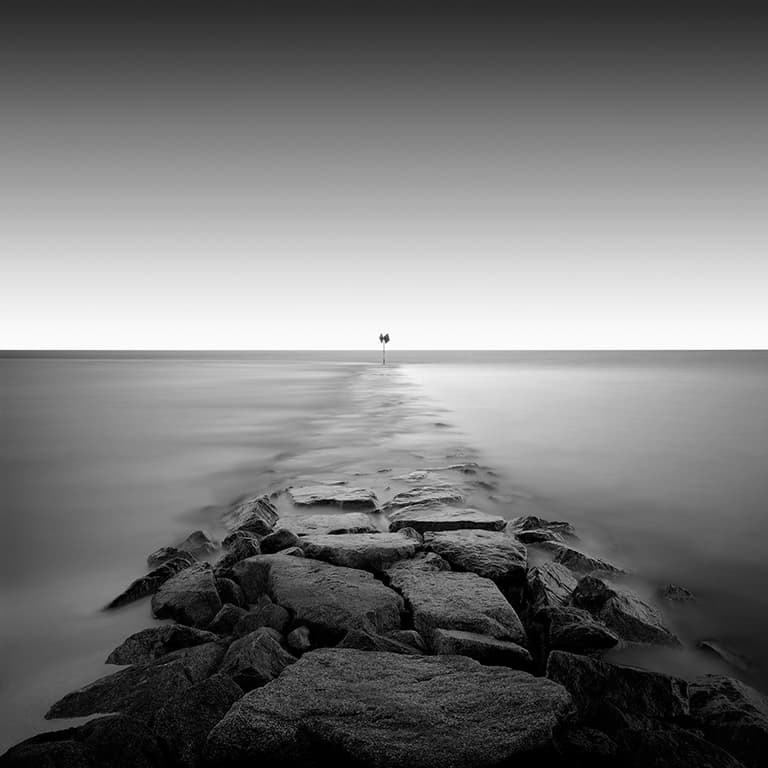
Jetty
Of course it’s distorted by your lens choice, or the fact you are recording it on black & white emulsion, but it is still real data. So the world that’s revealed to us through long exposures is in a sense a very real world that exists, it’s just that we don’t see it that way.
I’m using the camera as a scientific instrument, the way you might use a radio telescope to see radio waves, to be able to see this hidden world that I feel with my body. In showing a place over time and removing the motion we get to the experience.’
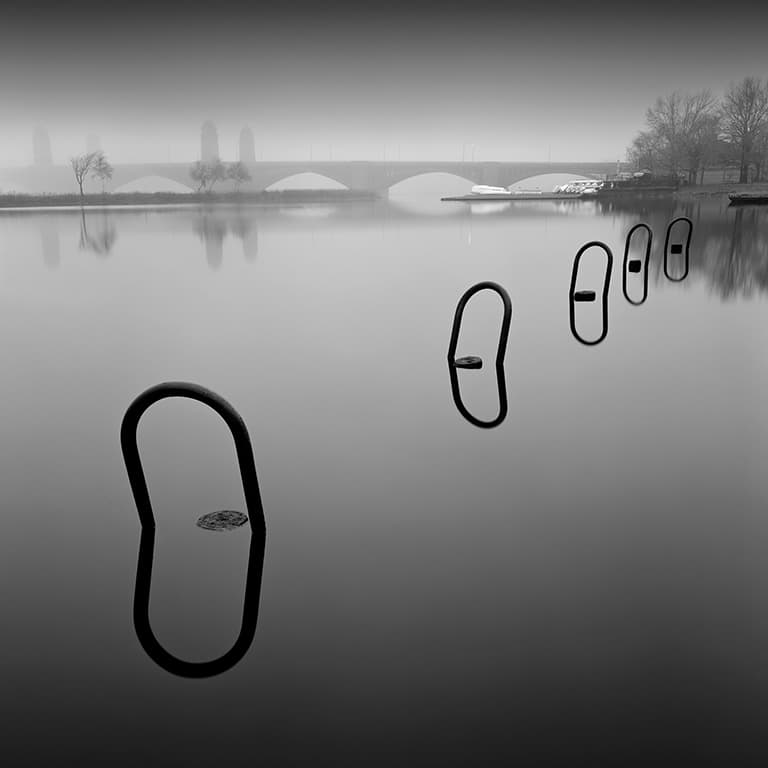
Mooring Rings, Study #1
The communication of an idea
For David, sitting on a beach looking at the sea is a kind of therapy, and he believes that’s one of the reasons his work resonates with some people. ‘You will never see the ocean look as it does in one of my photos. The water is never calm like that – and it’s never black and white, but that’s another matter.
But people who know nothing about photography or how pictures are made can look at these pictures and they aren’t uncomfortable with them. It doesn’t strike them that ‘Oh my God, there’s something wrong with this image’. It perhaps shows how humans perceive the world that these pictures seem very natural to them.
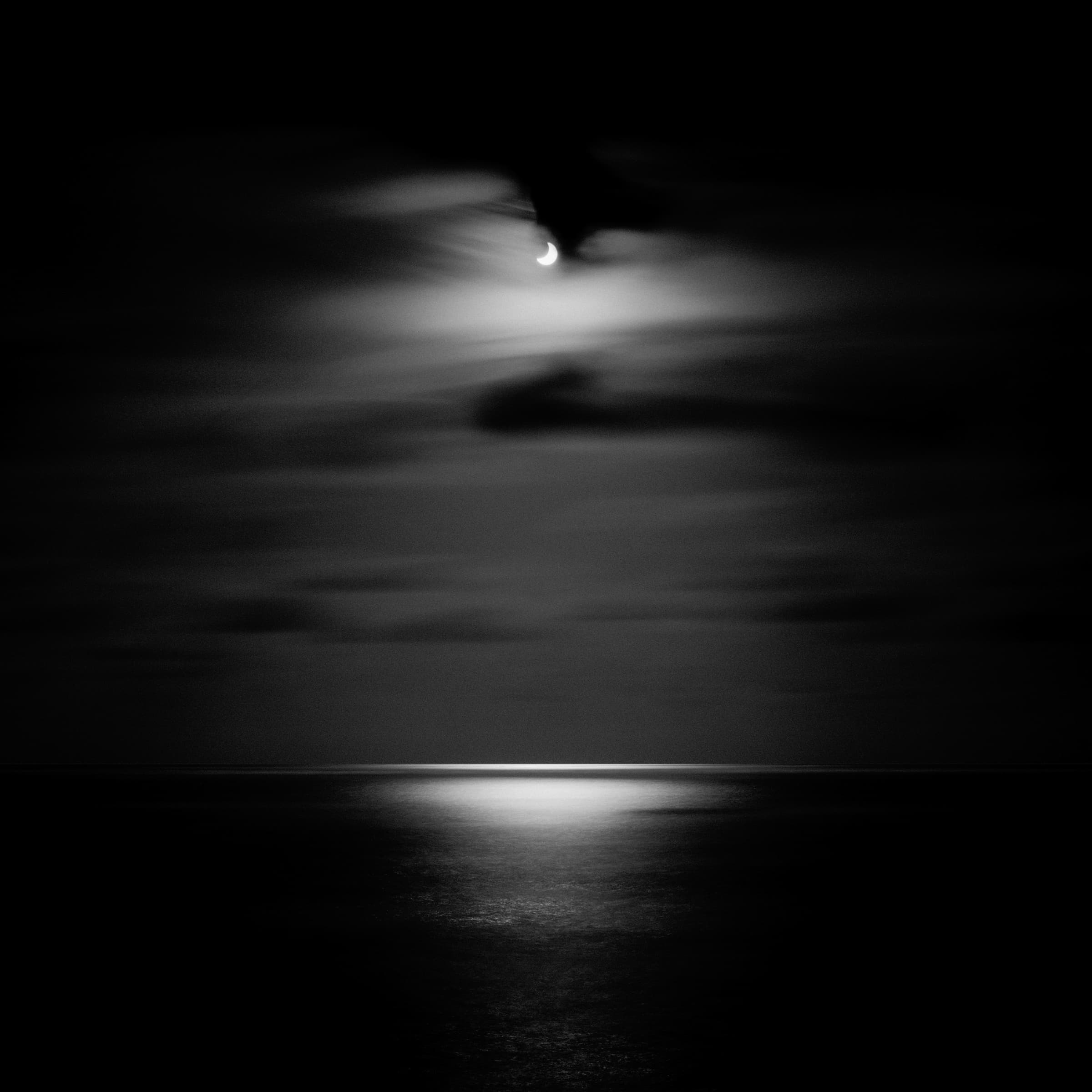
Solar Eclipse
From time to time I do a talk, and I start by showing a selection of my pictures without commentary. Then I ask the audience to give me some words that come to mind when they look at my images. I have never had anyone use a noun. They’ve not once said ‘rocks’, ‘ocean’, ‘water’, ‘vacation’. It’s always been to do with emotions. They use words like ‘calm’, ‘zen’, ‘tranquil’, and things like that. That makes me feel that my art has been successful. To me art is the communication of an idea, a thought or an emotion through craft.
Photography is my craft, and I have this idea that I want to evoke within the viewer and the message is received as intended.’
Early signs
David began taking pictures when he was 11. It all started when his grandfather gave him a Kodak Brownie before a trip to Europe.
‘I still have the photos from that first roll. Normally from a family trip you’d have pictures of the family or the dog, but I had nothing like that. I had cobbled streets, looming church spires – which was a bit unusual, but perhaps showed what was to come.’
David progressed to his father’s Pentax Spotmatic when he went to high school, and took a darkroom course to learn to process film and to print it. After becoming a fan of Ansel Adams and deciding he wanted to shoot like him, David bought a view camera.
‘I’d never even held a view camera before. It was a 5x7in Korona View from the 1920s. I taught myself to use it. I did not have a darkroom, but decided to teach myself platinum printing as I’d read that Alfred Stieglitz said it was the prince of photographic processes and that sounded wonderful.
‘Most of my photography took place during the summers while my family were vacationing on Martha’s Vineyard, an island off the coast of Massachusetts. Consequently I mostly shot sea coast and ocean stuff. You’d get out there in the morning at sunrise and there’d be no one on the beach – it was glorious and kinda spiritual.
And I wanted to capture the essence of that.’
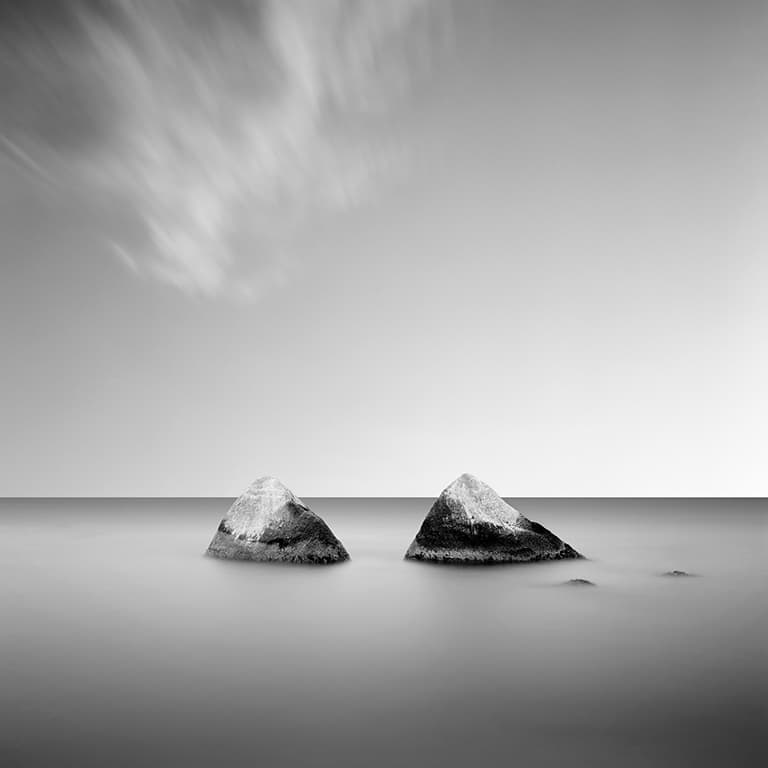
Painted Rocks
Mist in the stones
‘I made a lot of very bad photos,’ David reveals. ‘They just utterly failed to capture my experience. It was somewhat disconcerting, but at the same time I enjoyed being out there and the methodical nature of the view camera – so I persisted with it. I was enjoying the meditative nature of the process; setting up the camera, framing the shot, looking at the ground glass screen, inserting the darkslide, taking the exposure. I worked toward getting a photograph I was satisfied with.
I did this for about 15 years without success. I wanted a photograph that would evoke within me the feeling I had when I was there. My breakthrough came when I was shooting one time in the twilight and had to lengthen my exposure to 45 seconds. That created that sort of mist in amongst the stones on the beach. All of a sudden that was it, I’d found the answer.
It was a terrible photograph, but there was a coin-sized area that represented what I was feeling. That was a real spark for me. ‘I had to examine this area of the picture and ask, ‘why does this better represent what I feel than all my other pictures?’ I came to realise that it was the long exposure that did it for me, and that it was the element of time encoded in the picture.
The reason my earlier photographs failed is because they were snapshots.’
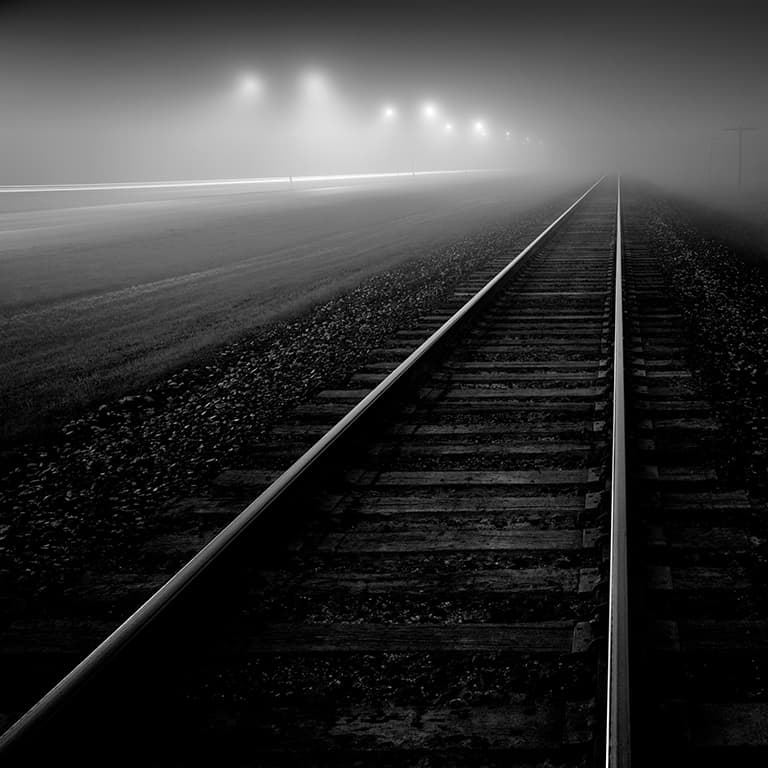
Stepping up
It was about 1998 before David showed anyone his photographs. ‘Before that I hadn’t shown them to my friends or even my family, but I’d made about a dozen pictures that I liked. I was printing in platinum and I’d moved up to an 8x10in camera because I wanted to make larger prints – platinum printing is a contact process, so your prints are only as big as your negative.
I’d decided that I liked square pictures (after discovering that my first lens created vignetting!) so moving from a 5x7in camera to an 8x10in camera allowed me to also move up from 5x5in prints to 8x8in prints. I wanted to make even larger prints, so I spent a year and a half developing a method for making digitally enlarged negatives for platinum printing.
This involved drum scanning the negative, and then outputting it onto a larger sheet of film using an industrial printing process. This gave me a continuous tone when contacted in the platinum process. I even wrote a paper on it and became a world expert.’

Balanced stones
Limitations are freedom
‘When I go out with my 8x10in camera I have six film holders each containing two sheets of film. Every time I make an exposure I do a second one at the same settings for safety, so now I’m down to six shots. If I decide I want some alternative compositions, or I want to try a polariser, I might get to shoot one scene before I have to go home or to unload in a dark environment.
I can’t shoot about a thousand frames and choose one after, as you can with digital photography – this is a much more deliberate process.
I don’t find shooting digitally as satisfying as shooting with the view camera, and while I don’t like to get into a romantic fantasy using this old wooden camera, I do like it very much,’ he confides. ‘I only shoot on Kodak Tri-X film and I develop it in Kodak D76.
This film has poor exposure reciprocity, but what some people might see as a “defect” is actually beneficial to my photography because it helps to retain the highlights in my long-exposure images. Digital cameras have a much more linear response, so they are more likely to allow highlights to blow out. With Tri-X it’s like I’m getting more dynamic range because the highlights hold on for a lot longer.’
Out of the box, 8x10in sheets of Kodak Tri-X are rated at ISO 320, unlike the 35mm version which is rated at ISO 400. A film rated even at ISO 320 might seem a funny choice for someone who makes long exposures in bright daylight when there are plenty of slower films around, but David rates his at 160 ISO.
‘I know it might seem odd, but the reciprocity characteristic is important to me. I also use a neutral density filter to cut down the light to allow these long exposures, and often a polariser too. ‘I’ve stuck with Tri-X for a long time. At the beginning I experimented with other films but had to decide whether I was an artist or a technician.
Did I want to spend my time trying out new equipment or making pictures? I use only one lens too – a Rodenstock 210mm f/5.6 – so I don’t have to waste a lot of time making decisions while the moment is fading. I don’t want to dilute my experience of the moment by deciding what equipment I’m going to use. Having one lens means I never have to think about it. That might seem a limitation, but actually it’s a freedom.
The joy of local
Since well over half of David’s portfolio is shot on Martha’s Vineyard, he’s got to know it really well, which has been really beneficial. ‘Instead of travelling the world and going to the “highlights” you can get more by exploring a single location in depth. My pictures aren’t about a place so much as how I feel, so there’s no need to travel.
There are good pictures to be taken anywhere. I’ve waited three years for the right conditions to get the shot that I wanted – exactly the right combination of the right weather, tide and time of year.’
The method
‘Tri-X is a very forgiving film so I don’t have to be as particular as some people. I use a spot meter and meter for zone 3 – and that’s it. I tried the Zone System but decided it wasn’t for me as working out the zones just distracted me from feeling the moment,’ he explains.
‘A typical exposure is about two minutes. I got to this as an average because a two-minute exposure tends to show all the movement I want. If I do a four-minute exposure it won’t look appreciably different from a two-minute exposure, but a one-minute exposure will. Two minutes reduces all the visual noise in the scene – all the temporal events have time to settle down, either leave the frame or average out.
Generally I stop right down to the minimum aperture of the lens, which is f/64. I know theoretically I get some softness because of the small aperture, but in practice that hasn’t been a problem. I almost always use an ND filter too.
Moving to scanning
David doesn’t do platinum print any more. ‘Now I have a wide-format Epson inkjet printer, and the Epson V750 scanner with the wet plate. The V750 gives me better results than a drum scanner. It produces massive files. I scan at 4000 ppi and I have a lot of external hard drives, which feels a bit odd for someone who uses a wooden camera from the 1920s. I might use an old camera, but I’m certainly not a Luddite.’
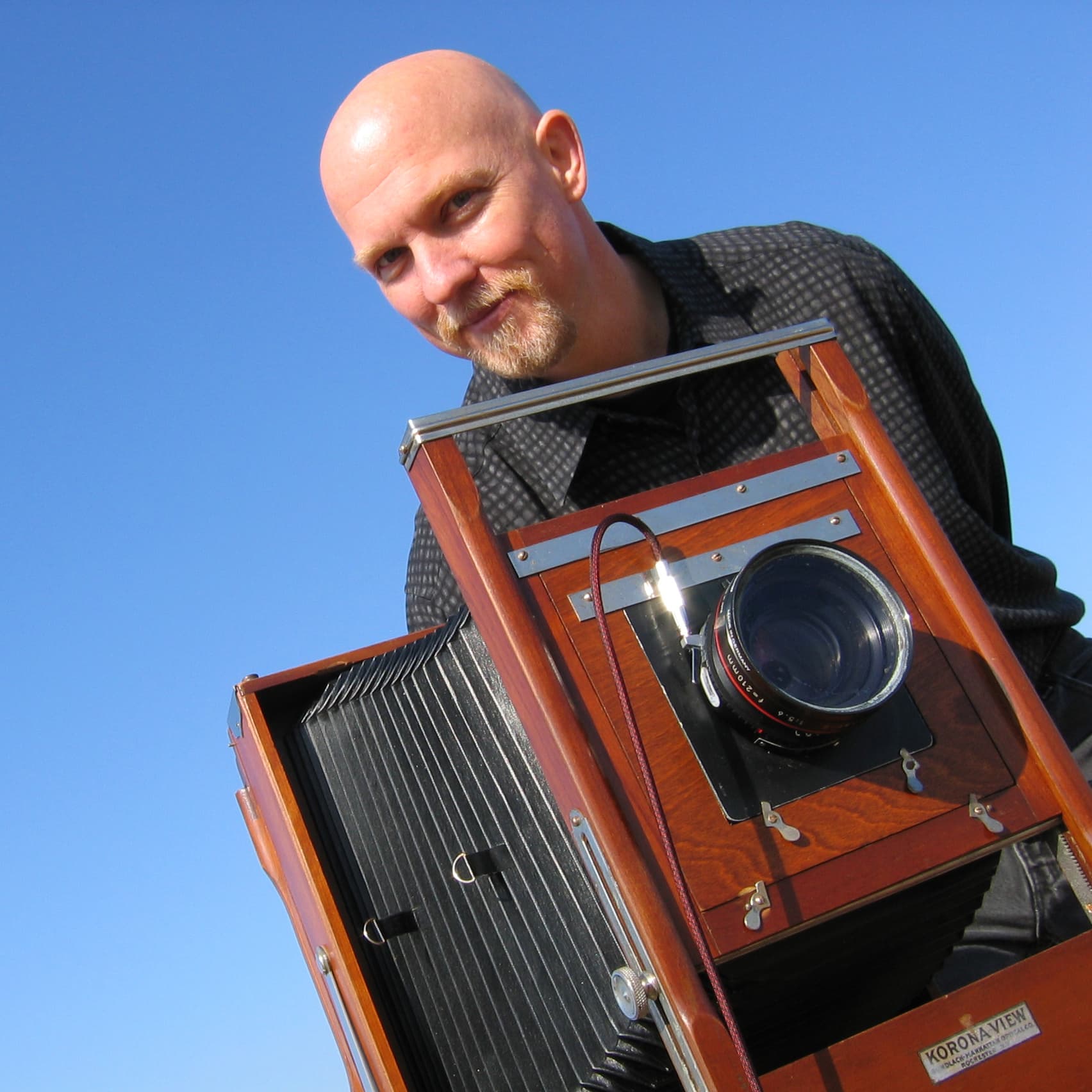
Credit: Sparks Gallery
Get Fokos-sed: David’s tips for starting out with long exposure film photography
The thing I tell people most often is to ‘show me something I haven’t seen before’. Now that’s really hard as there are so many images out there, but if you want to make a career out of photography this is important.
I’ve just been judging an art show and marked down pretty heavily for unoriginality. Don’t be taken in by fads either, like printing the rebate of your film. People need to have the courage to make their pictures what they want them to be.
Embrace your vision and your ideas, and don’t worry about what other people say.
Further reading
The essential guide to shooting film

